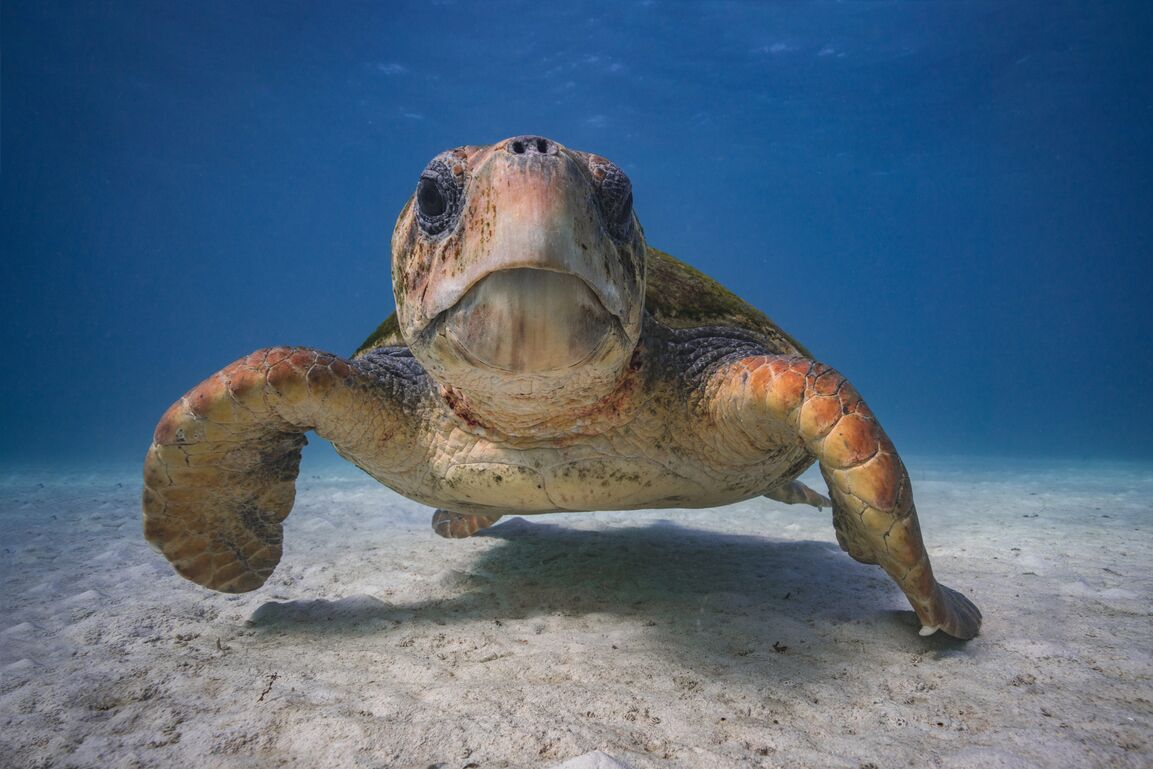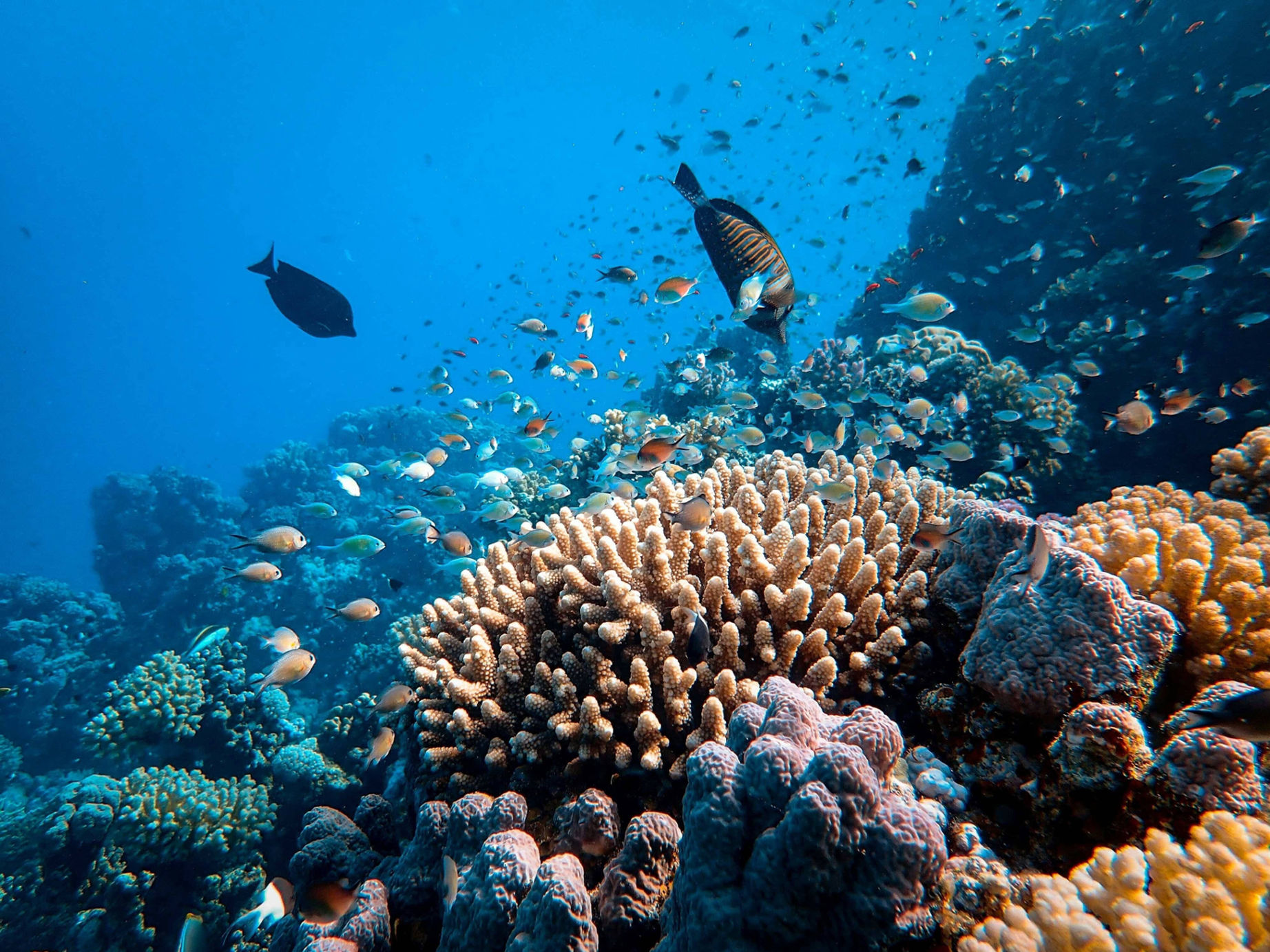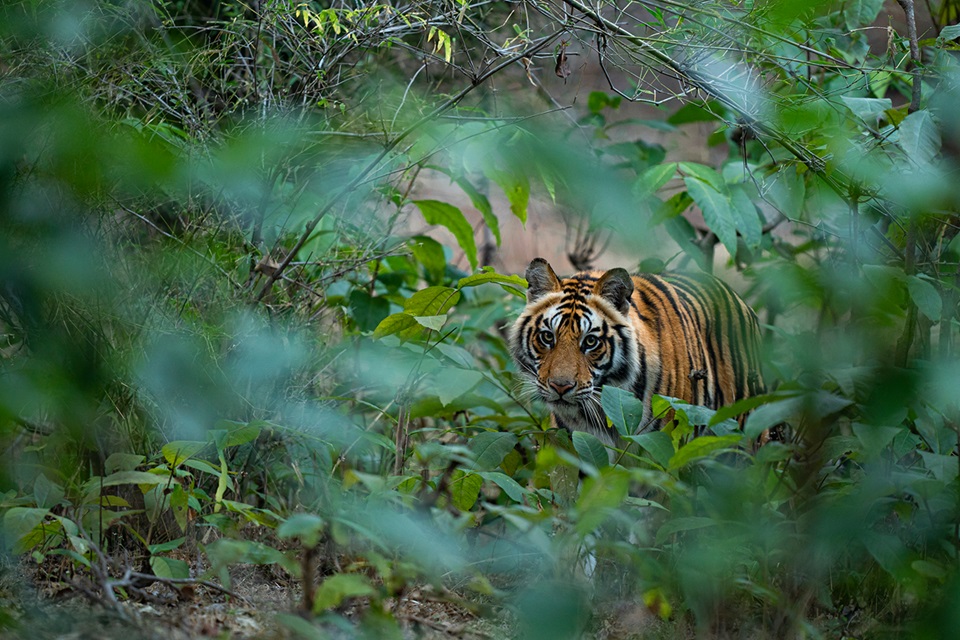First-of-its-kind study shows conservation interventions are critical to halting and reversing biodiversity loss
A new study in the scientific journal Science provides the strongest evidence to date that not only is environmental conservation successful, but that scaling conservation interventions up would be transformational for halting and reversing biodiversity loss, a crisis that leads to ecosystem collapse and a planet less able to support life.
The findings of this first-ever comprehensive meta-analysis of the impact of conservation action, conceived and funded through the International Union for Conservation of Nature (IUCN) by the Global Environment Facility, are crucial as more than 44,000 species are documented as being at risk of extinction, with tremendous consequences for the ecosystems that stabilize the climate and that provide billions of people around the world with clean water, livelihoods, homes, and cultural preservation, among other ecosystem services. Governments recently adopted new global targets to halt and reverse biodiversity loss, making it even more critical to understand whether conservation interventions are working.
“If you look only at the trend of species declines, it would be easy to think that we’re failing to protect biodiversity, but you would not be looking at the full picture,” said Penny Langhammer, lead author of the study and executive vice president of Re:wild. “What we show with this paper is that conservation is, in fact, working to halt and reverse biodiversity loss. It is clear that conservation must be prioritised and receive significant additional resources and political will globally, while we simultaneously address the systemic drivers of biodiversity loss, such as overconsumption and production.”
Although many papers look at individual conservation projects and interventions and their impact compared to no action taken, these papers have never been pulled into a single analysis to see how and whether conservation action is working overall. The co-authors conducted the first-ever meta-analysis of 186 studies, including 665 trials, that looked at the impact of a wide range of conservation interventions globally, and over time, compared to what would have happened without those interventions. The studies covered over a century of conservation action and evaluated actions targeting different levels of biodiversity – species, ecosystems and genetic diversity.
“For more than 75 years, IUCN has advanced the importance of sharing conservation practice globally,” said Dr Grethel Aguilar, IUCN Director General. “This paper has analysed conservation outcomes at a level as rigorous as in applied disciplines like medicine and engineering – showing genuine impact and thus guiding the transformative change needed to safeguard nature at scale around the world. It shows that nature conservation truly works, from the species to the ecosystem levels across all continents. This analysis, led by Re:wild in collaboration with many IUCN Members, Commission experts, and staff, stands to usher in a new era in conservation practice.”
From the establishment and management of protected areas, to the eradication and control of invasive species, to the sustainable management of ecosystems, to habitat loss reduction and restoration, the research finds that conservation actions improve the state of biodiversity or slow its decline the majority of the time (66% of the time) compared to no action taken at all. And when conservation interventions work, the paper’s co-authors found that they are highly effective.
For example:
- Predator management of two of Florida’s barrier islands, Cayo Costa and North Captiva, resulted in an immediate and substantial improvement in nesting success by loggerhead turtles and least terns, especially compared to other barrier islands where no predator management was applied.
- In the Congo Basin, deforestation was 74% lower in logging concessions under a Forest Management Plan (FMP) compared to concessions without an FMP.
- Protected areas and Indigenous lands were shown to significantly reduce both deforestation and fire in the Brazilian Amazon. Deforestation was 1.7 to 20 times higher along the outside of the reserve perimeters compared to inside, and fires occurred four to nine times more frequently.
- Supportive breeding boosted the natural population of Chinook salmon in the Salmon River basin of central Idaho with minimal negative impacts on the wild population. On average, fish taken into the hatchery produced 4.7 times more adult offspring and 1.3 times more adult grand-offspring than naturally reproducing fish.
"This paper is not only extremely important in providing robust evidence of the impact of conservation actions. It is also extremely timely in informing crucial international policy processes, including the establishment of a 20-year vision for IUCN, the development of an IPBES assessment of biodiversity monitoring, and the delivery of the action targets toward the outcome goals of the new Kunming-Montreal Global Biodiversity Framework," Thomas Brooks, IUCN chief scientist and co-author of the study, said.
“Our study shows that when conservation actions work, they really work. In other words, they often lead to outcomes for biodiversity that are not just a little bit better than doing nothing at all, but many times greater,” added Jake Bicknell, co-author of the paper and a conservation scientist at the University of Kent. “For instance, putting measures in place to boost the population size of an endangered species has seen their populations increase substantially. This effect has been mirrored across a large proportion of the case studies we've looked at.”
Even in the minority of cases where conservation actions did not succeed in protecting the species or ecosystems that they aimed to protect compared to taking no action, conservationists benefited from the knowledge gained and were able to refine their methods. For example, in India the physical removal of invasive algae caused the spread of the establishment of the algae elsewhere because the process broke the algae into many pieces. Conservationists are now able to implement a different, more successful, strategy to remove the algae.
This might also explain why the co-authors found a correlation between more recent conservation interventions and positive outcomes for biodiversity--conservation may be getting more effective over time. Other reasons for this correlation include an increase in funding and more targeted interventions.
In some other cases where the conservation action did not succeed in protecting the target biodiversity compared to no action at all, other native biodiversity benefitted unintentionally instead. For example, seahorse abundance was lower in protected sites because marine protected areas increase the abundance of seahorse predators, including octopus.
“It would be too easy to lose any sense of optimism in the face of ongoing biodiversity declines,” said study co-author and Associate Professor Joseph Bull, from the University of Oxford’s Department of Biology. “However, our results clearly show that there is room for hope. Conservation interventions seemed to be an improvement on inaction most of the time; and when they were not, the losses were comparatively limited."
According to previous studies, a comprehensive global conservation program would require an investment of between US$178 billion and US$524 billion, focused primarily in countries with particularly high levels of biodiversity. To put this in perspective, in 2022, global fossil fuel handouts--which are destructive to nature--were US$1 trillion. This is twice the highest amount needed annually to protect and restore the planet. Today US$121 billion is invested annually into conservation worldwide, and previous studies have found the cost:benefit ratio of an effective global program for the conservation of the wild is at least 1:100.
“With less than six years remaining to achieve ambitious biodiversity targets by 2030, there is a great sense of urgency for effective conservation action. We can take proven methods to conserve nature, such as protected areas, and scale them up for real conservation impact. This research clearly demonstrates that conservation actions are successful. We just need to take them to scale,” Madhu Rao, chair IUCN World Commission on Protected Areas, said.
“Anyone involved in the field of conservation will have witnessed the power of nature to regenerate and grow, given a chance to do so. From fishery exclusion zones, to ecological restoration on land, and animal, fungi and plant recovery efforts, there are numerous examples of halting and reversing biodiversity declines. Langhammer and colleagues synthesize knowledge on the impact of conservation action, and demonstrate that evidence-based conservation efforts indeed work in the majority of cases, not just in a few hand-picked examples. Much more money is spent on destroying nature than on protection and recovery. The authors show that tipping the balance in favour of nature is likely to help us deliver the world's ambitious biodiversity conservation targets,” Jon Paul Rodriguez, chair of the IUCN Species Survival Commission, added.
The paper also argues that there must be more investment specifically in the effective management of protected areas, which remain the cornerstone for many conservation actions. Consistent with other studies, this study finds that protected areas work very well on the whole. And what other studies have shown is that when protected areas are not working, it is typically the result of a lack of effective management and adequate resourcing. Protected areas will be even more effective at reducing biodiversity loss if they are well-resourced and well-managed.
Moving forward, the study’s co-authors call for more and rigorous studies that look at the impact of conservation action versus inaction for a wider range of conservation interventions, such as those that look at the effectiveness of pollution control, climate change adaptation, and the sustainable use of species, and in more countries.
Additional quotes:
Piero Genovesi, ISPRA, co-author and chair, IUCN SSC Invasive Species Specialist Group
“Species and ecosystems are facing a dramatic crisis, and the Biodiversity Plan of the United Nations is an urgent global call to action. This paper shows that eradication, control and management of invasive alien species have the largest impact in terms of conservation, and can help reverse the current trends of biodiversity loss, potentially saving hundreds of species from extinction. It is essential that governments and donors support the struggle against invasive alien species if we want to meet the agreed biodiversity targets by 2030.”
Stephen Woodley, co-author, ecologist and vice chair for science and biodiversity, IUCN World Commission on Protected Areas
“The world hope that conservation action can work to halt and reverse biodiversity loss. This paper demonstrates that a range of conservation actions are highly effective. We just need to do more of them.”
Stuart Butchart, co-author and chief scientist, BirdLife International
“Recognising that the loss and degradation of nature is having consequences for societies worldwide, governments recently adopted a suite of goals and targets for biodiversity conservation. This new analysis is the best evidence to date that conservation interventions make a difference, slowing the loss of species’ populations and habitats and enabling them to recover. It provides strong support for scaling up investments in nature in order to meet the commitments that countries have signed up to.”
Jamie Carr, co-author and researcher in climate change and biodiversity governance, Leverhulme Centre for Anthropocene Biodiversity, University of York, UK
“This work represents a huge effort on the part of many conservation professionals, all of whom are committed to reversing the loss of the world's biodiversity. It is encouraging to find that the past work of other conservationists has had a positive impact on nature, and I sincerely hope that our findings inspire those working now and in the future to ramp up their efforts."
Mike Hoffmann, co-author and head of wildlife recovery, Zoological Society of London
“The major advance of this study is its sheer weight of evidence. We can point to specific examples, such as how captive breeding and reintroductions have facilitated the return of scimitar-horned oryx to the wild in Chad, but these can feel a bit exceptional. This study draws on more than 650 published cases to show that conservation wins are not rare. Conservation mostly works—unfortunately, it is also mostly significantly under-resourced.”
Gernot Segelbacher, co-author, professor and co-chair of Conservation Genetic Specialist Group, University Freiburg
“Conservation matters! While we so often hear about species declining or going extinct, this study shows that we can make a difference.”





